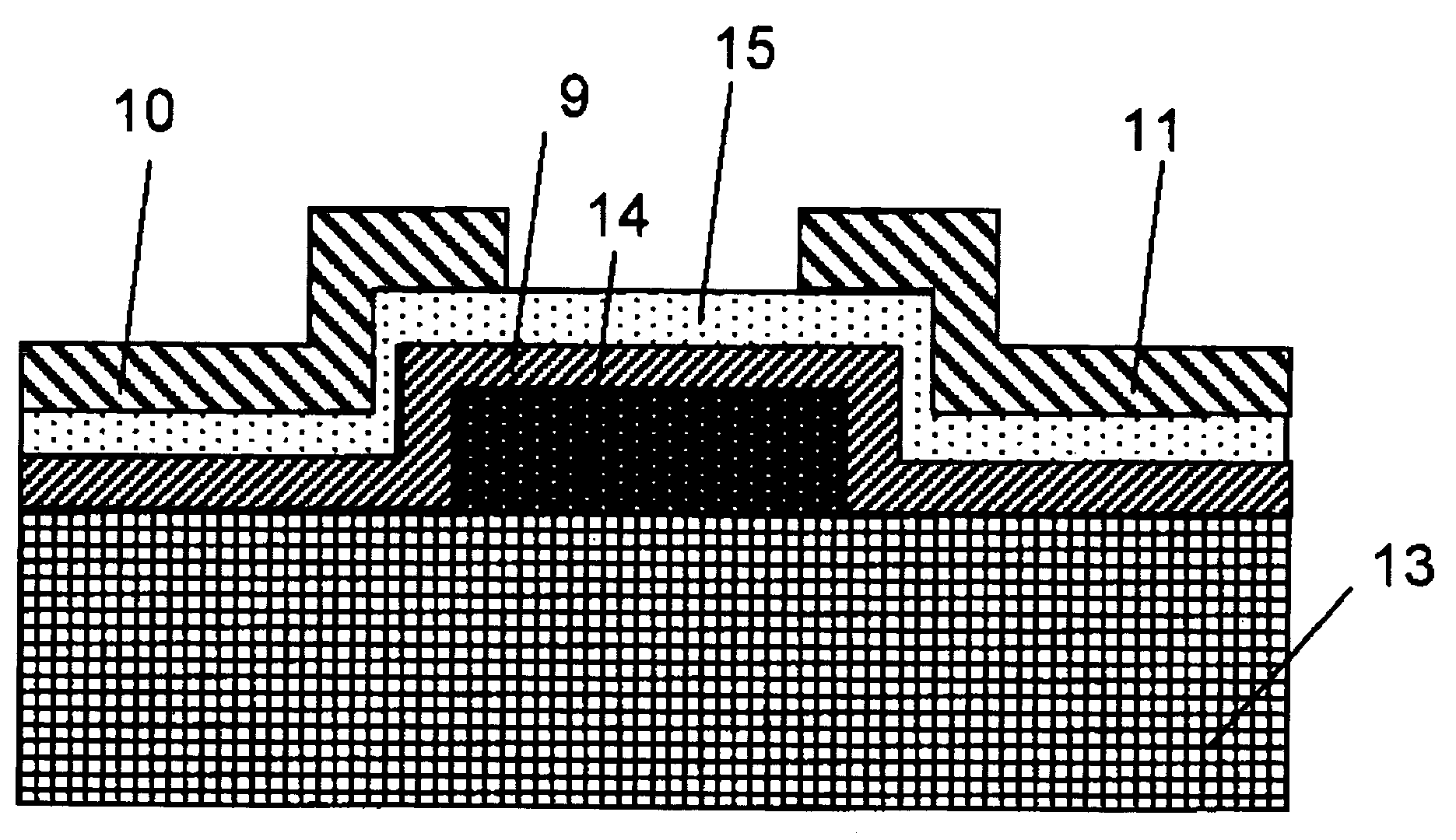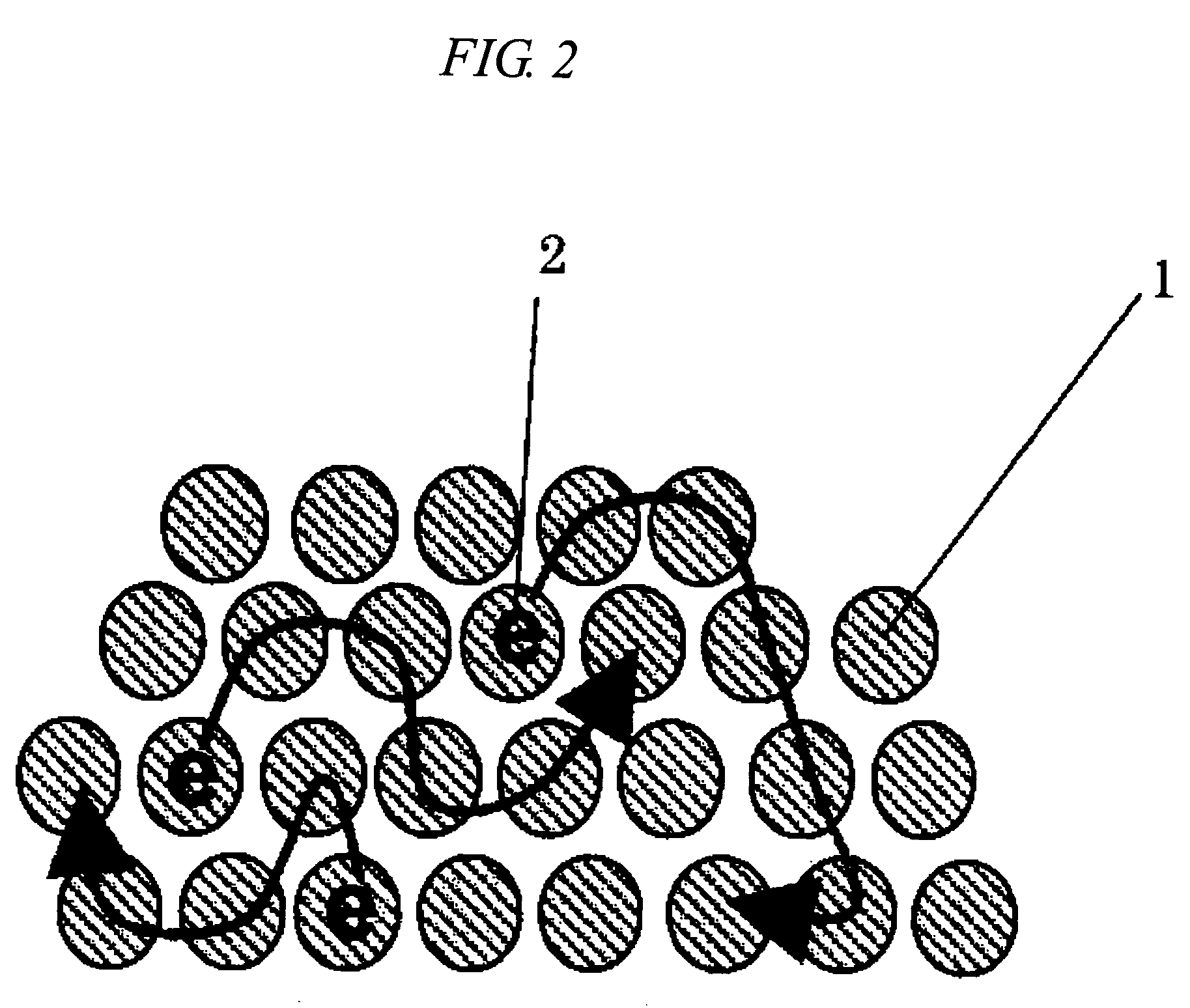Field effect transistor and manufacturing method thereof
a manufacturing method and transistor technology, applied in the direction of luminescent compositions, semiconductor devices, chemistry apparatus and processes, etc., can solve the problems of difficult to actually change the physical properties of the bulk, large change of electron density, and variable problems to be solved
- Summary
- Abstract
- Description
- Claims
- Application Information
AI Technical Summary
Benefits of technology
Problems solved by technology
Method used
Image
Examples
first embodiment
[0052] The method of synthesizing the nanoparticles used for a channel portion of the Mott transistor according to the present invention will be described. First, hydrogen tetrachloroaurate (III) tetrahydrate of 0.31 g is dissolved into the water of 30 ml. Then, toluene of 80 ml is added to the solution and tetra-n-octyl ammonium bromide of 2.2 g is added thereto. Thereafter, the solution is stirred for an hour at a room temperature. Then, 1-dodecanethiol of 170 mg is dropped slowly to the solution, and the solution is stirred for an hour. Meanwhile, sodium borohydride of 0.38 g is dissolved into the water of 25 ml and this is dropped into the above-mentioned solution in 30 minutes, and the resulting solution is stirred for four hours. The solution is separated and an organic layer is concentrated to 10 ml. Then, ethanol of 400 ml is added thereto and the resulting solution is left sitting for 50 hours at −18° C. Thereafter, it is dried under the reduced pressure after removing the ...
second embodiment
[0071] In the above-described first embodiment, since the carriers are not doped into the nanoparticles before applying the gate voltage, the change form metal to insulator is observed when the gate voltage is increased. This second embodiment discloses the method as follows. That is, the doping to the self-organized nanoparticle array is performed in advance so as to achieve the normally off, and then, the Mott transistor is integrated on a flexible substrate.
[0072] First, a flexible plastic substrate 13 is prepared and a gold gate electrode 14 is formed thereon by using the lift-off process as shown in FIG. 19. The flexible substrate is made of plastic and is cost effective in comparison to a single crystal silicon substrate. Therefore, it is possible to significantly reduce the cost for manufacturing the device.
[0073] Subsequently, a silicon dioxide gate insulating film 9 with a thickness of about 20 nm is deposited as shown in FIG. 20. Next, the nanoparticles are formed in the...
third embodiment
[0080] This embodiment discloses the method in which an organic semiconductor is bonded to the periphery of the metal nanoparticles so that the effective mobility of the field effect transistor in which the self-aligned nanoparticle array bonded by the organic semiconductor is used for a channel can be increased about ten times.
[0081] At the beginning, the nanoparticles used in this embodiment are formed. First, hydrogen tetrachloroaurate (III) tetrahydrate of 0.37 g is dissolved into the water of 30 ml. Then, chloroform of 80 ml is added to the solution and tetra-n-octyl ammonium bromide of 2.2 g is added thereto. Thereafter, the solution is stirred for an hour at a room temperature. Then, poly(3-hexyl thiophene) of 0.28 g is added to the solution and the resulting solution is stirred for an hour. Further, sodium borohydride of 0.38 g is dissolved into the water of 25 ml and this solution is dropped into the above-described solution in 30 minutes, and the resulting solution is sti...
PUM
 Login to View More
Login to View More Abstract
Description
Claims
Application Information
 Login to View More
Login to View More - R&D
- Intellectual Property
- Life Sciences
- Materials
- Tech Scout
- Unparalleled Data Quality
- Higher Quality Content
- 60% Fewer Hallucinations
Browse by: Latest US Patents, China's latest patents, Technical Efficacy Thesaurus, Application Domain, Technology Topic, Popular Technical Reports.
© 2025 PatSnap. All rights reserved.Legal|Privacy policy|Modern Slavery Act Transparency Statement|Sitemap|About US| Contact US: help@patsnap.com



